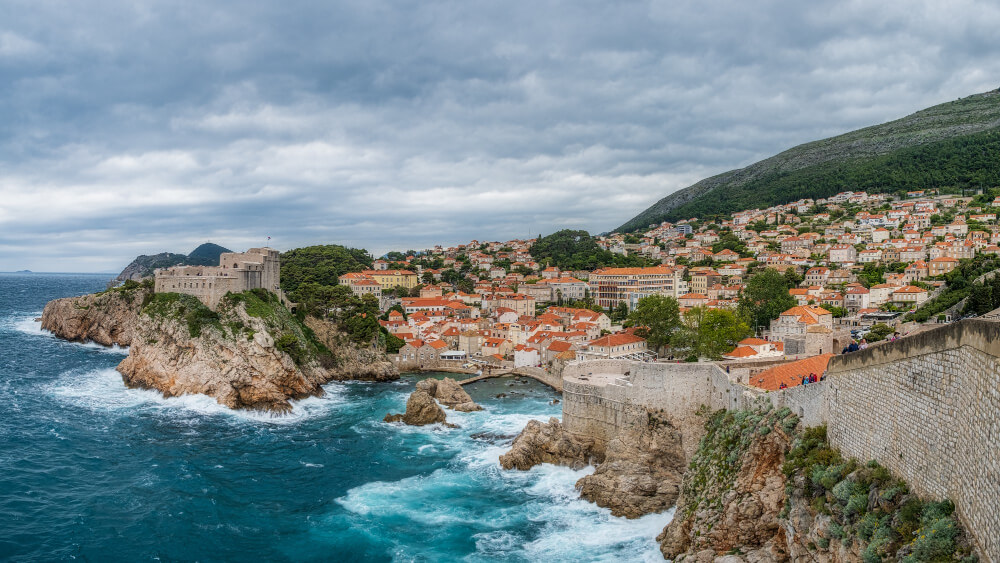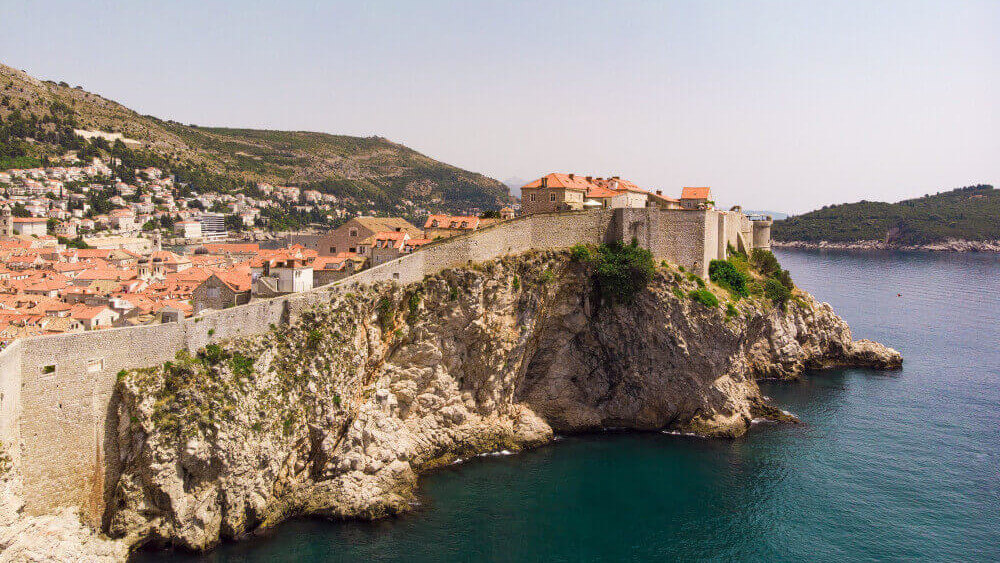
Dubrovnik is one of the most beautiful cities in Europe and undoubtedly a showcase for Croatia. Situated on the southern Dalmatian coast, on the crystal-clear waters of the Adriatic Sea, it has been attracting travelers for centuries with its architecture, climate, and rich history. Often called the “Pearl of the Adriatic,” Dubrovnik is a place where medieval walls meet modern lifestyles, and tourists are captivated by both its historic center and picturesque beaches.
The history of Dubrovnik – from a republic to a modern city
Dubrovnik’s roots date back to the 7th century, when refugees from nearby Epidaurum (present-day Cavtat) took refuge on the small island of Laus. Over time, the city merged with the mainland settlement and became an important trading center.
Its greatest prosperity came during the Dubrovnik Republic (1358–1808), when the city was an independent city-state, rivaling the might of Venice. Thanks to its merchant fleet, diplomacy, and seafaring skills, Dubrovnik became one of the wealthiest ports on the Adriatic.
The city’s history was not without tragedy – in 1667, a massive earthquake destroyed most of its buildings, and in the 20th century, Dubrovnik suffered damage during the war in the former Yugoslavia. Despite this, it was meticulously rebuilt, retaining its unique character.
Old Town – the heart of Dubrovnik
The biggest attraction is, of course, the Old Town, a UNESCO World Heritage Site. Surrounded by massive defensive walls dating from the 14th and 15th centuries, it resembles a living, open-air medieval museum.
Defensive walls
A walk along the walls is a must. They are 2 km long, up to 25 meters high, and offer spectacular views of the Adriatic Sea, the rooftops of the Old Town, and the surrounding islands. The tour lasts approximately 2 hours and is best started in the morning or late afternoon to avoid the largest crowds.


Stradun Street
The city’s main street, paved with limestone slabs, connects the Pile Gate with the Old Town Harbor. This is where Dubrovnik’s life pulsates – cafes, restaurants, souvenir shops, and buildings reminiscent of the republic’s glory days.
Rectors’ Palace
The former seat of power of the Dubrovnik Republic, today a museum showcasing the city’s history. The building combines Gothic, Renaissance, and Baroque styles, and its interior is captivating with its rich detail.
Cathedral of the Assumption of the Blessed Virgin Mary
The Baroque church houses, among other things, the relics of St. Blaise, the city’s patron saint, and works by great masters of painting.
Attractions outside the walls
Dubrovnik is not only about the Old Town – the surrounding area also offers many places worth visiting.
- Fort Lovrijenac – situated on a rocky cliff, known as the “Gibraltar of Dubrovnik”, was an important defensive point of the city.
- Lokrum Island – just a 15-minute boat ride from the port, perfect for a day trip. It boasts beaches, a botanical garden, and the ruins of a Benedictine monastery.
- Banje Beach – Dubrovnik’s most popular beach, offering beautiful views of the city walls.
- Srd Hill – you can go up it by cable car and admire the panorama of the city and the coast.
Dubrovnik in culture and pop culture
The city became world-famous thanks to the TV series “Game of Thrones,” where it served as King’s Landing. This has made Dubrovnik a pilgrimage destination for fans of the series, eager to explore the locations seen on screen.
In addition, Dubrovnik is the backdrop for numerous festivals and cultural events, including the Dubrovnik Summer Festival, which has been bringing together artists from around the world since 1950.
Dubrovnik Cuisine – the Flavors of Dalmatia
A trip to Dubrovnik is also a culinary treat. Local cuisine is based on fresh fish, seafood, olive oil, and wines from Croatian vineyards.
Recommended dishes:
- Pasticada – beef stewed in wine with spices, served with dumplings.
- Black risotto – made from squid, colored with natural ink.
- Rozata – a dessert resembling crème brûlée.
- Local wines, including Plavac Mali and Dingač.
Practical information for tourists
- The best time to travel – May, June and September, when it is warm but there are not as many crowds as in the peak season.
- Transportation – The Old Town is a pedestrian zone, with cars parked outside the walls. Public transportation is well-developed.
- Currency – euro (from 2023).
- Language – Croatian, but in tourist places you can easily communicate in English.
- Prices – Dubrovnik is one of the more expensive cities in Croatia, so it is worth booking accommodation in advance.
If you want to learn more valuable information before traveling to Croatia, we invite you to read our other article: What is worth knowing before traveling to Croatia?
Why is it worth visiting Dubrovnik?
Dubrovnik combines history, culture, beautiful views, and the unique atmosphere of a seaside town. Walking the stone streets, smelling the sea, and admiring the red rooftops, you’ll feel as if time had stopped centuries ago. This is a place that can enchant everyone—whether you’re a lover of historical sites, a beach vacation, or a lover of good food.
Summary
Dubrovnik is not only one of the most beautiful corners of Croatia, but also of all of Europe. Its walls, monuments, culture, and atmosphere make it a destination you’ll want to return to again and again. Whether you come for a weekend getaway or a longer vacation, Dubrovnik will surely leave a lasting impression on your memory.
